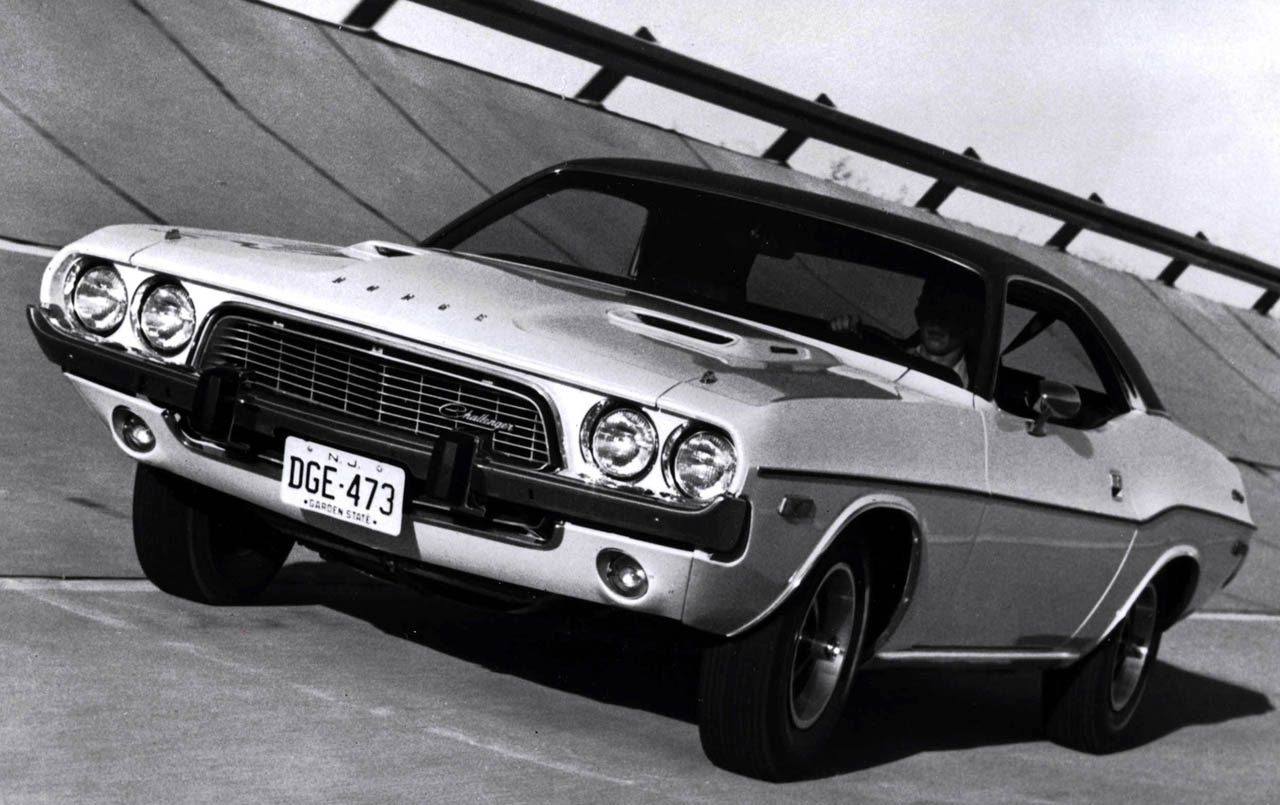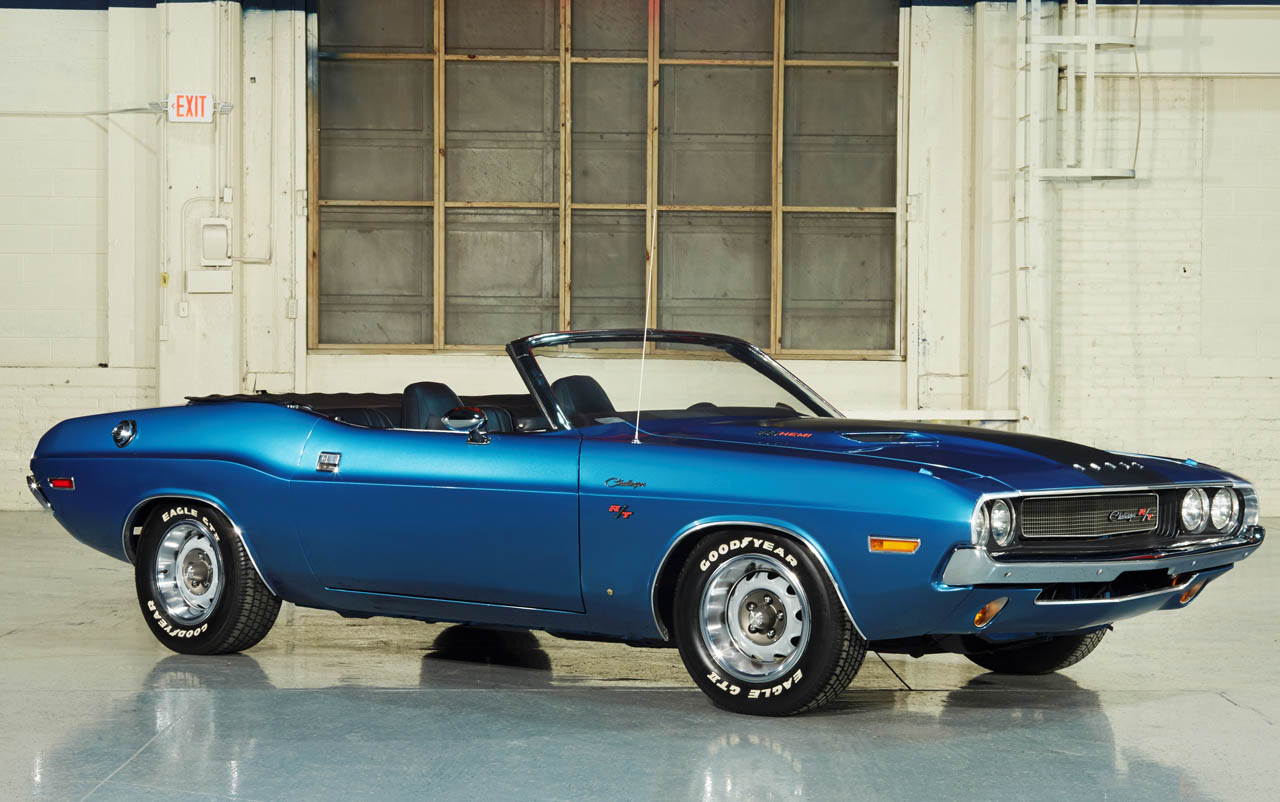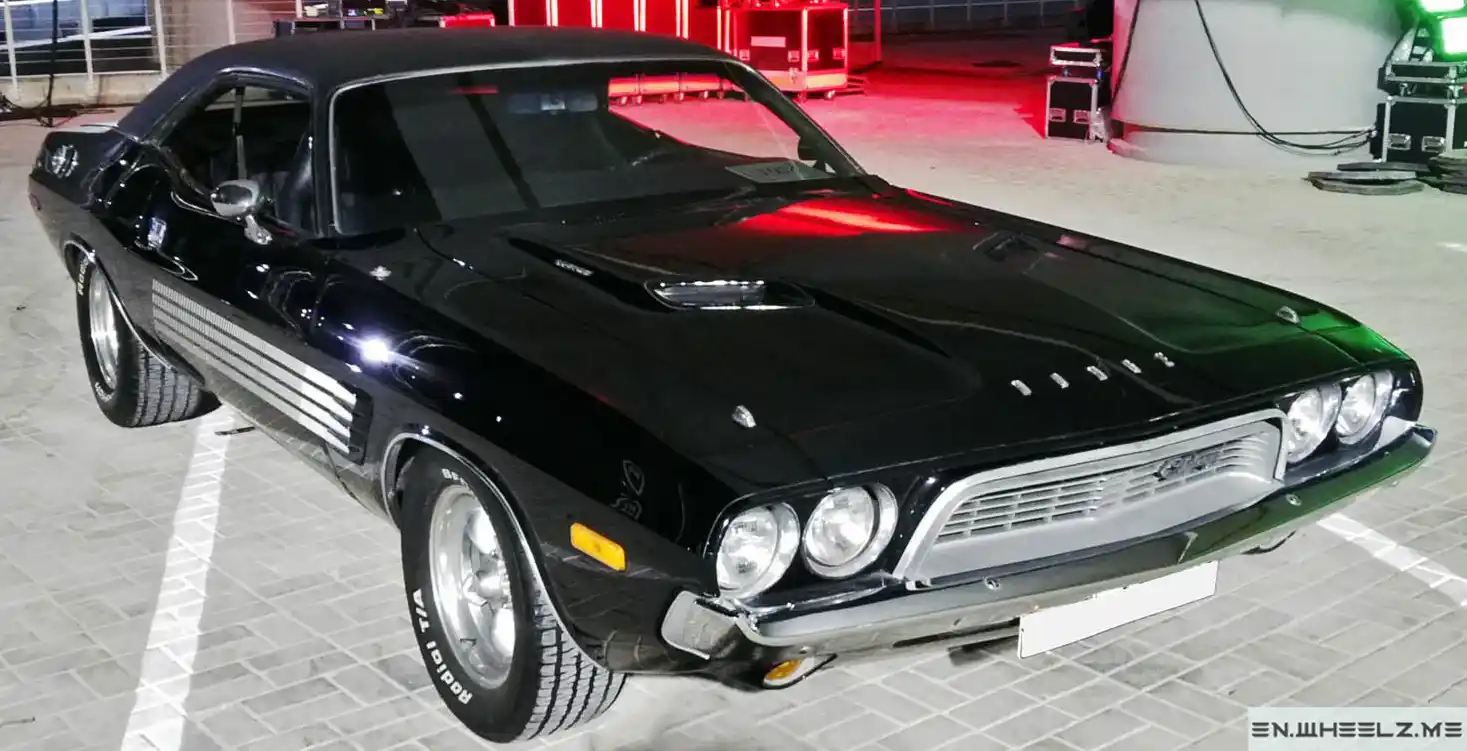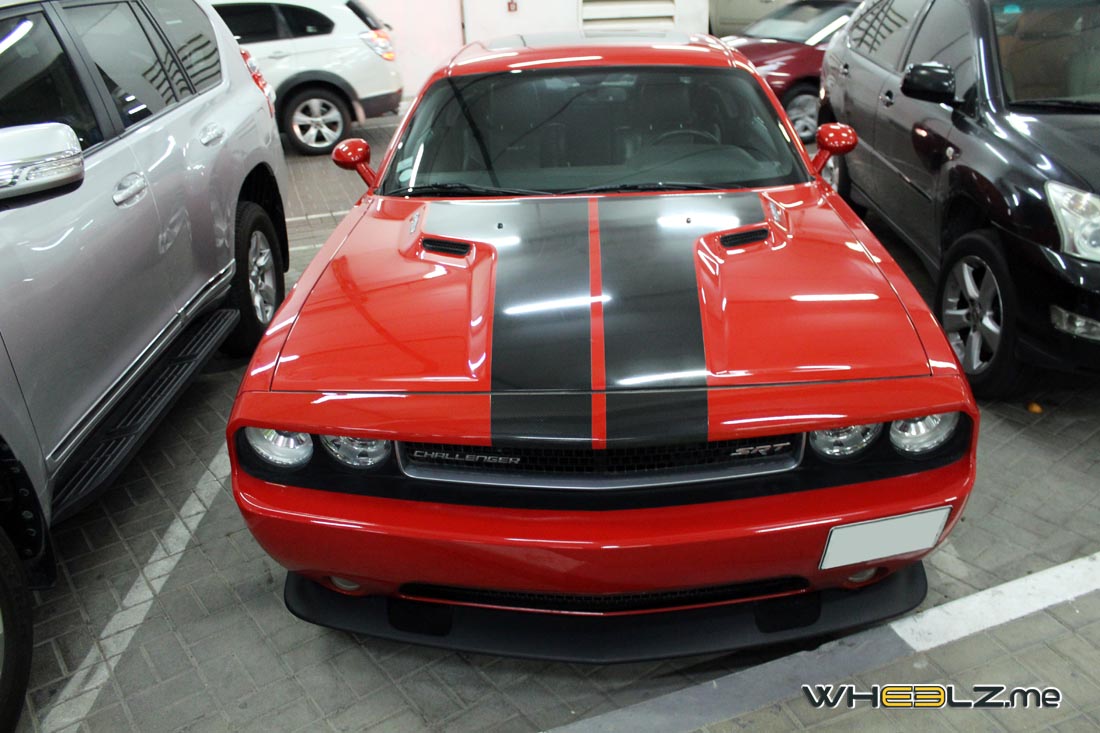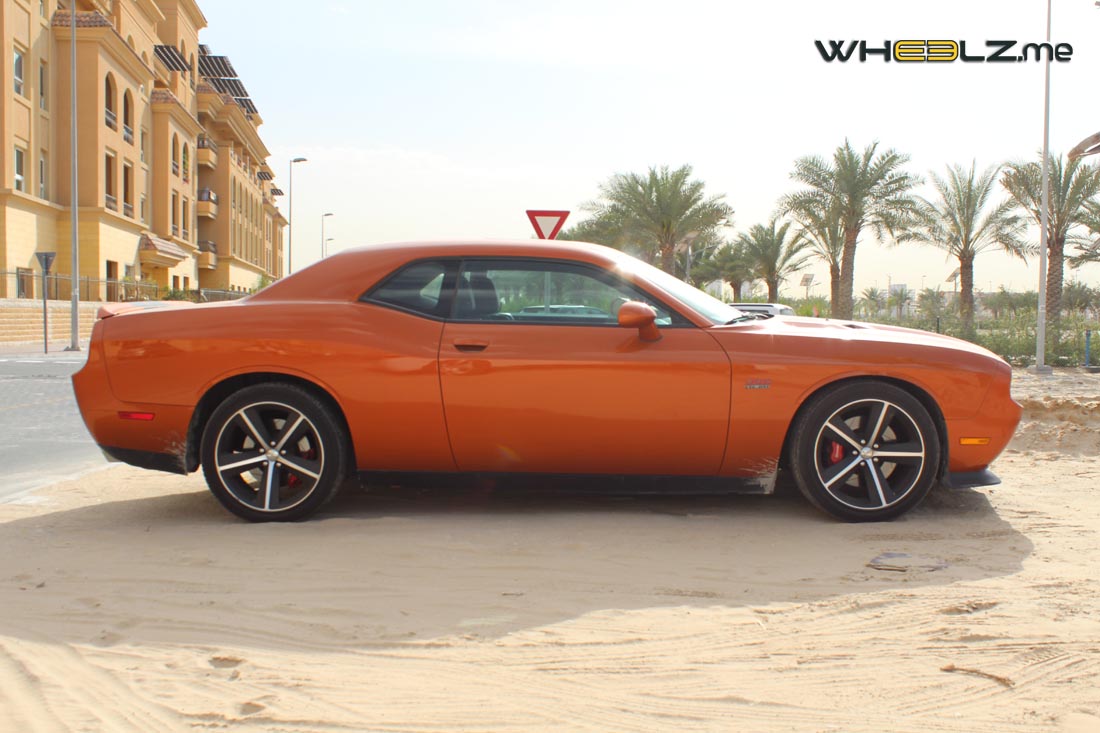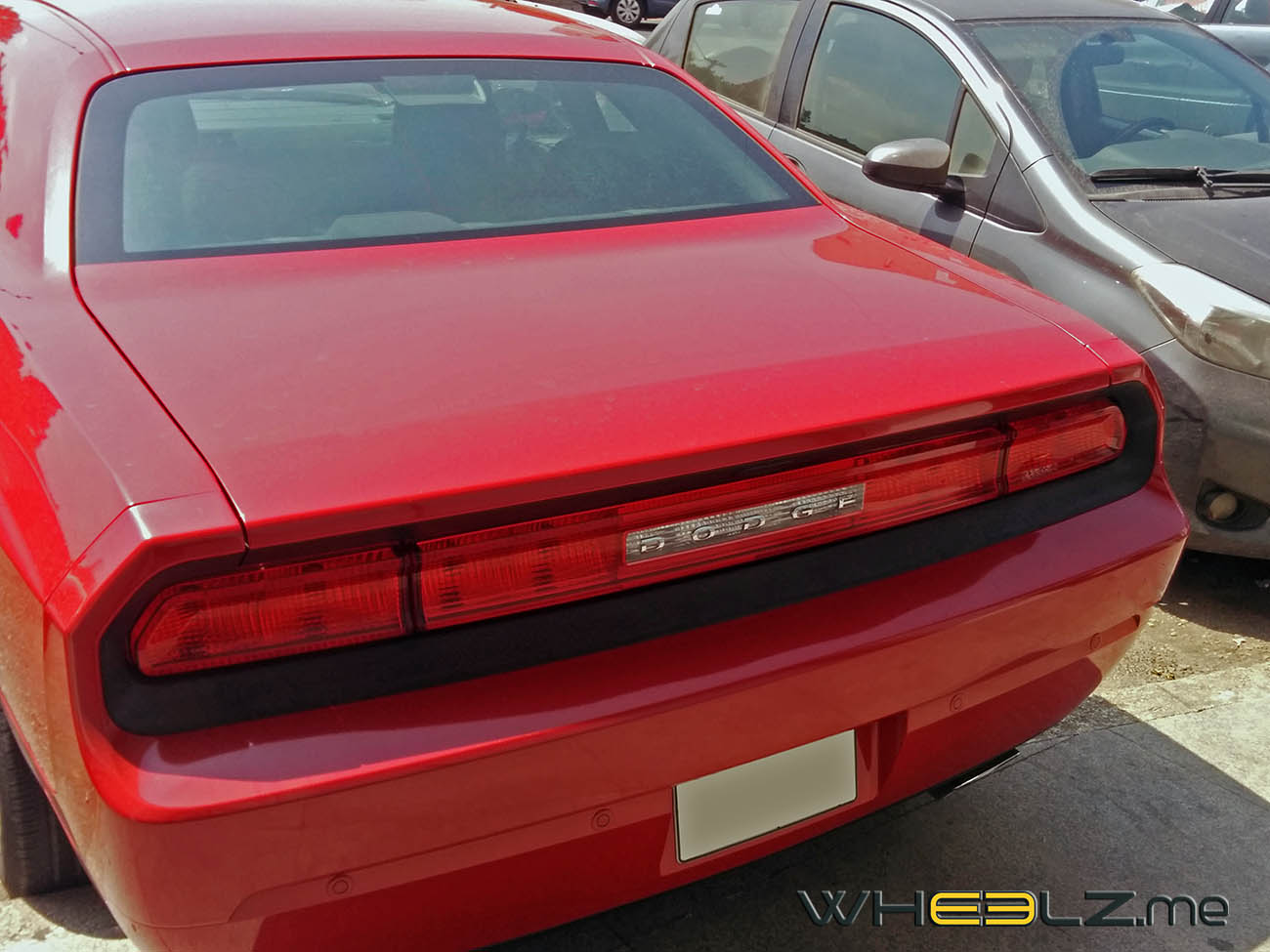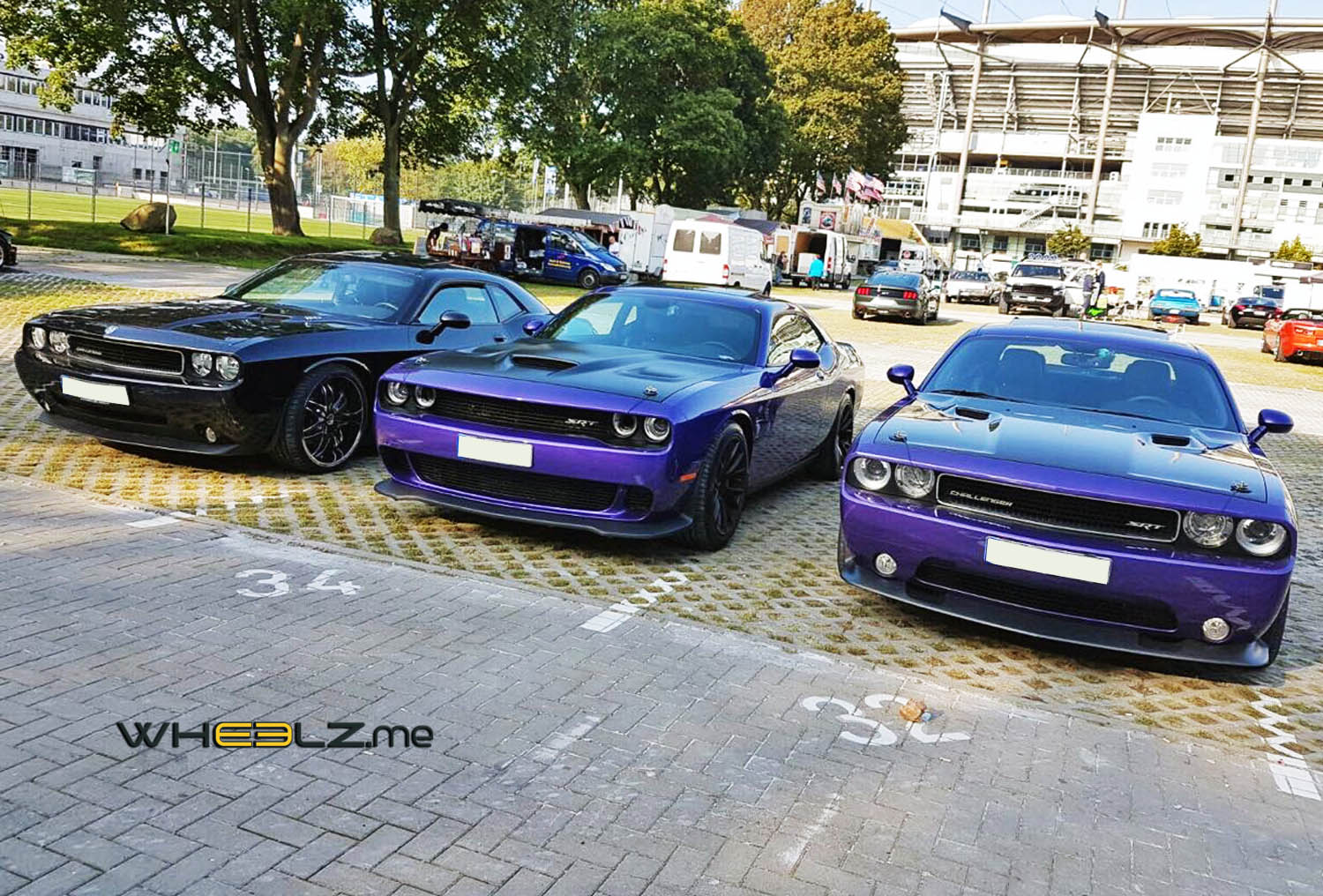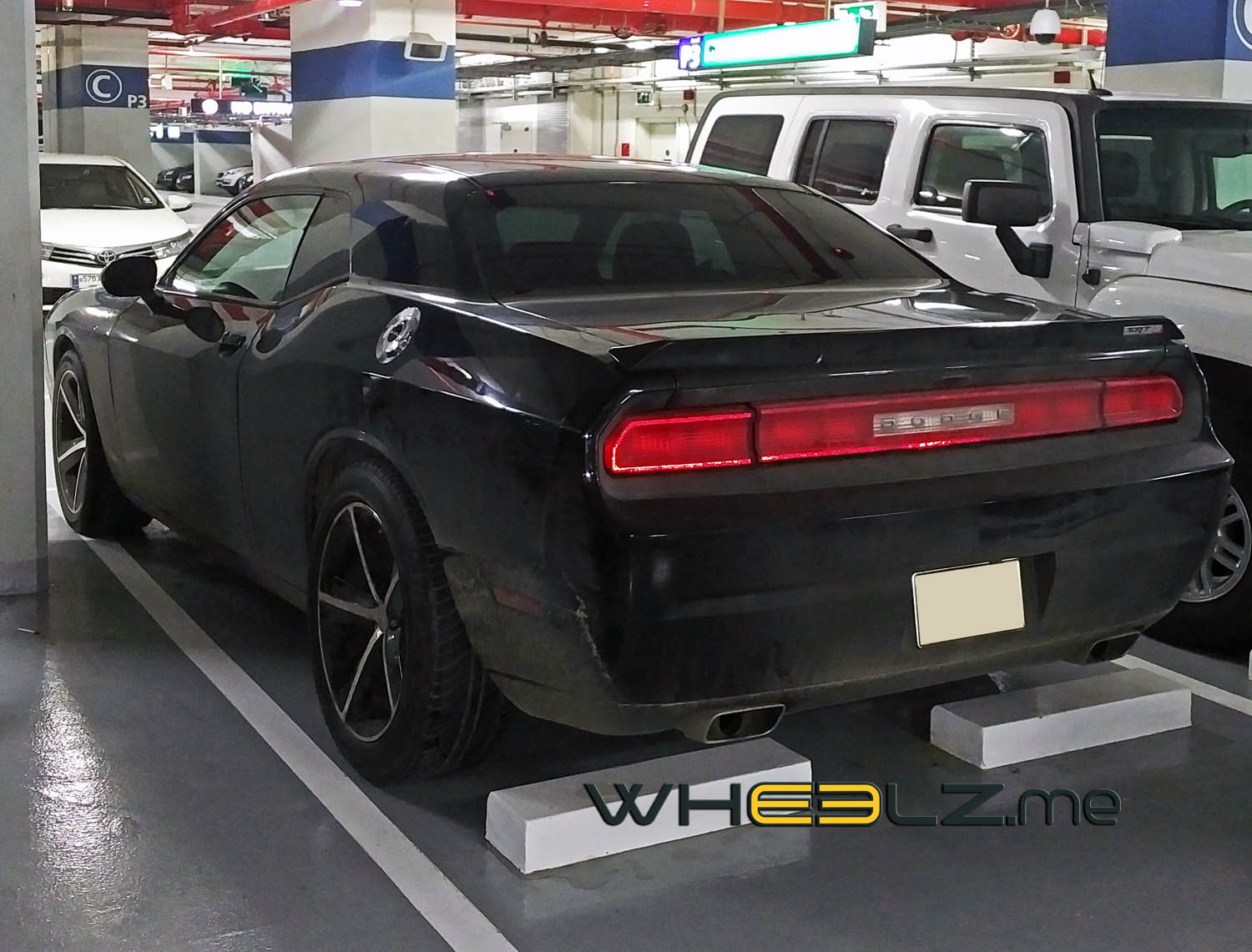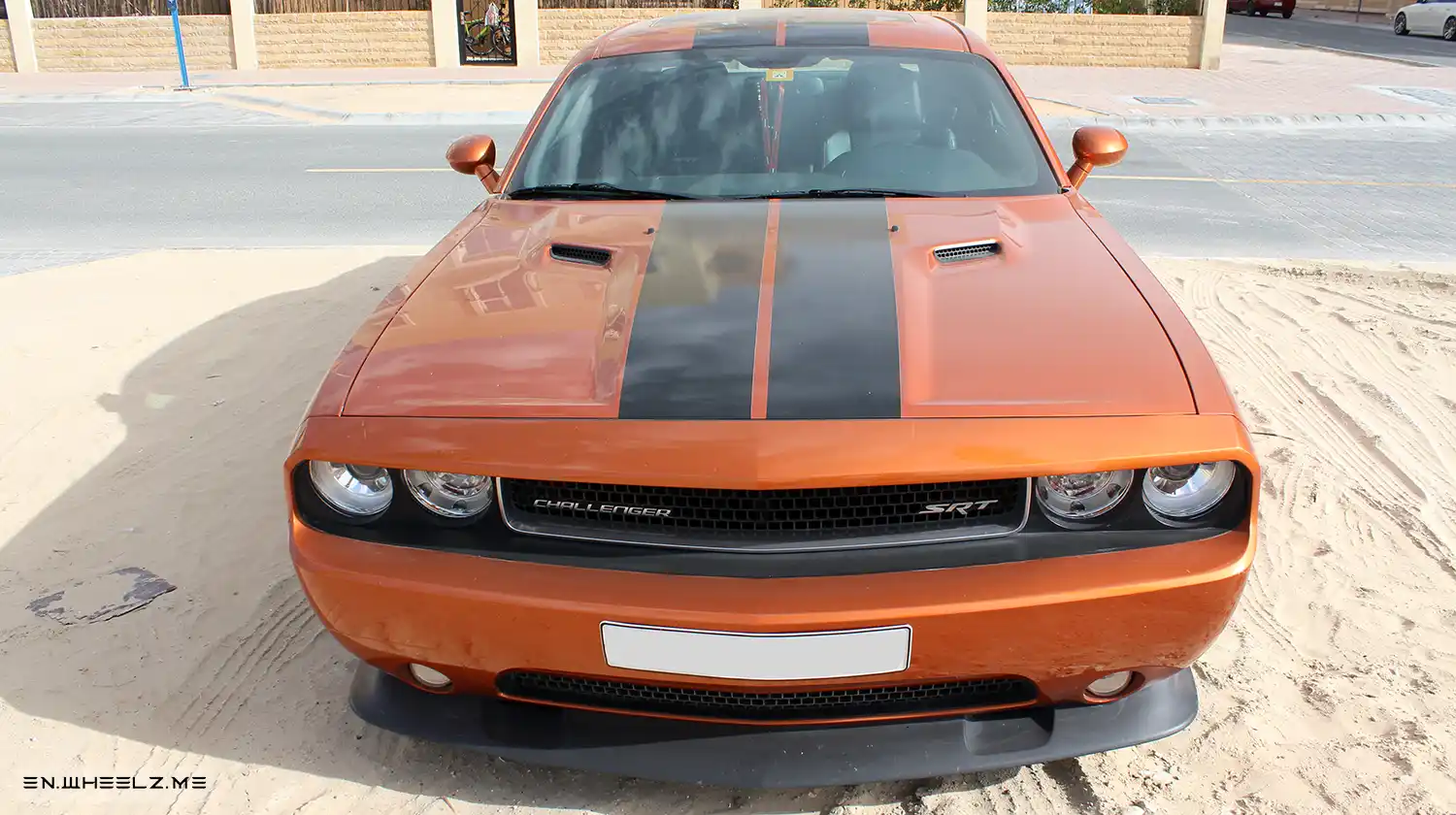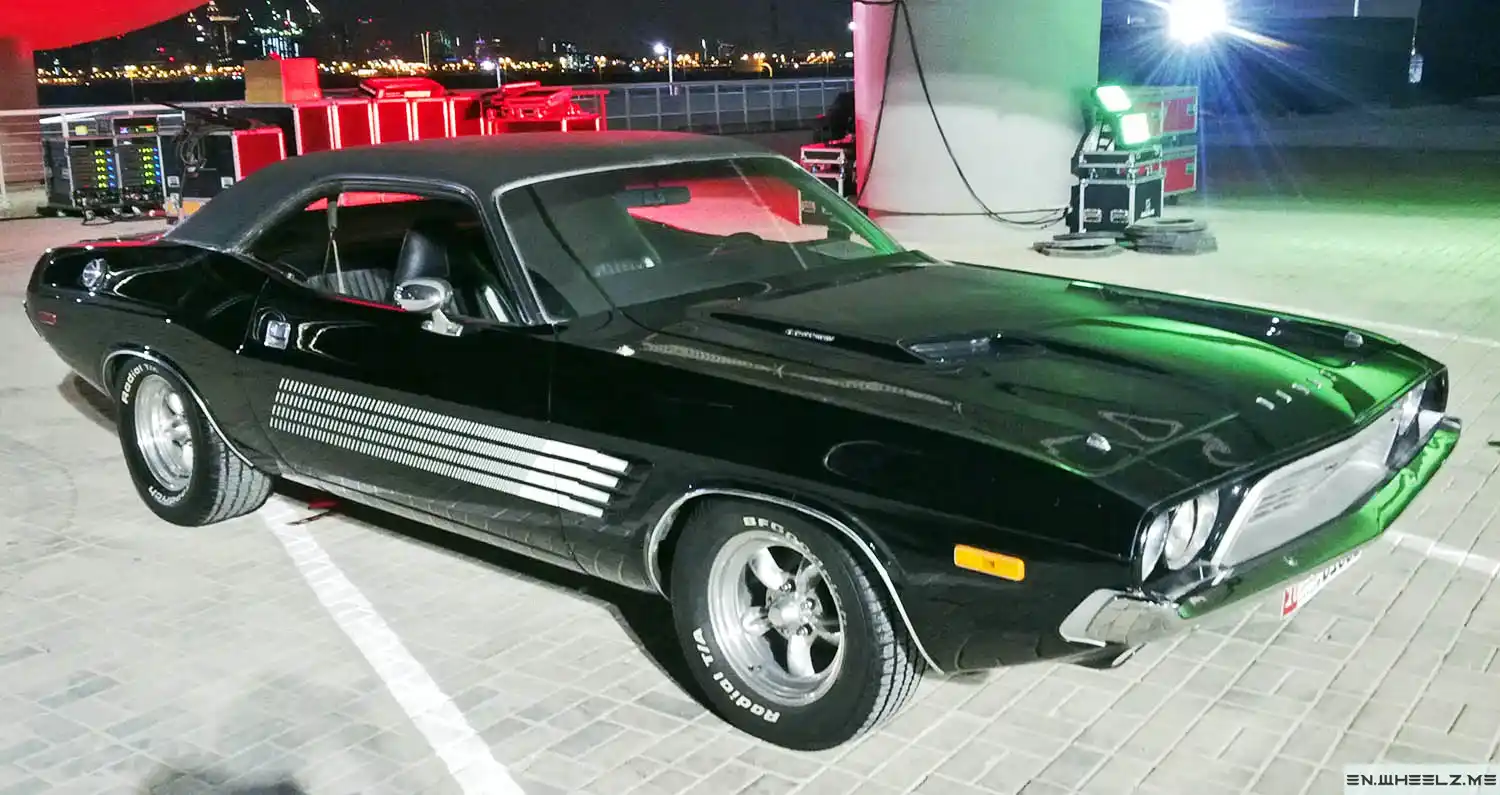
When the Dodge Challenger first entered in the muscle car ranks of Detroit’s Big Three, it arrived with something its competitors didn’t have: the greatest range of powertrain choices in the industry, from the small but durable 225-cubic-inch “Slant Six” to the fearsome “Elephant Motor” — the 426 HEMI®. With the best muscle-car powertrains in the business, Dodge Challenger has added, and continues to add, to its rich legacy, creating one of the most storied nameplates in automotive history.
Dodge Challenger’s 50-year legacy includes:
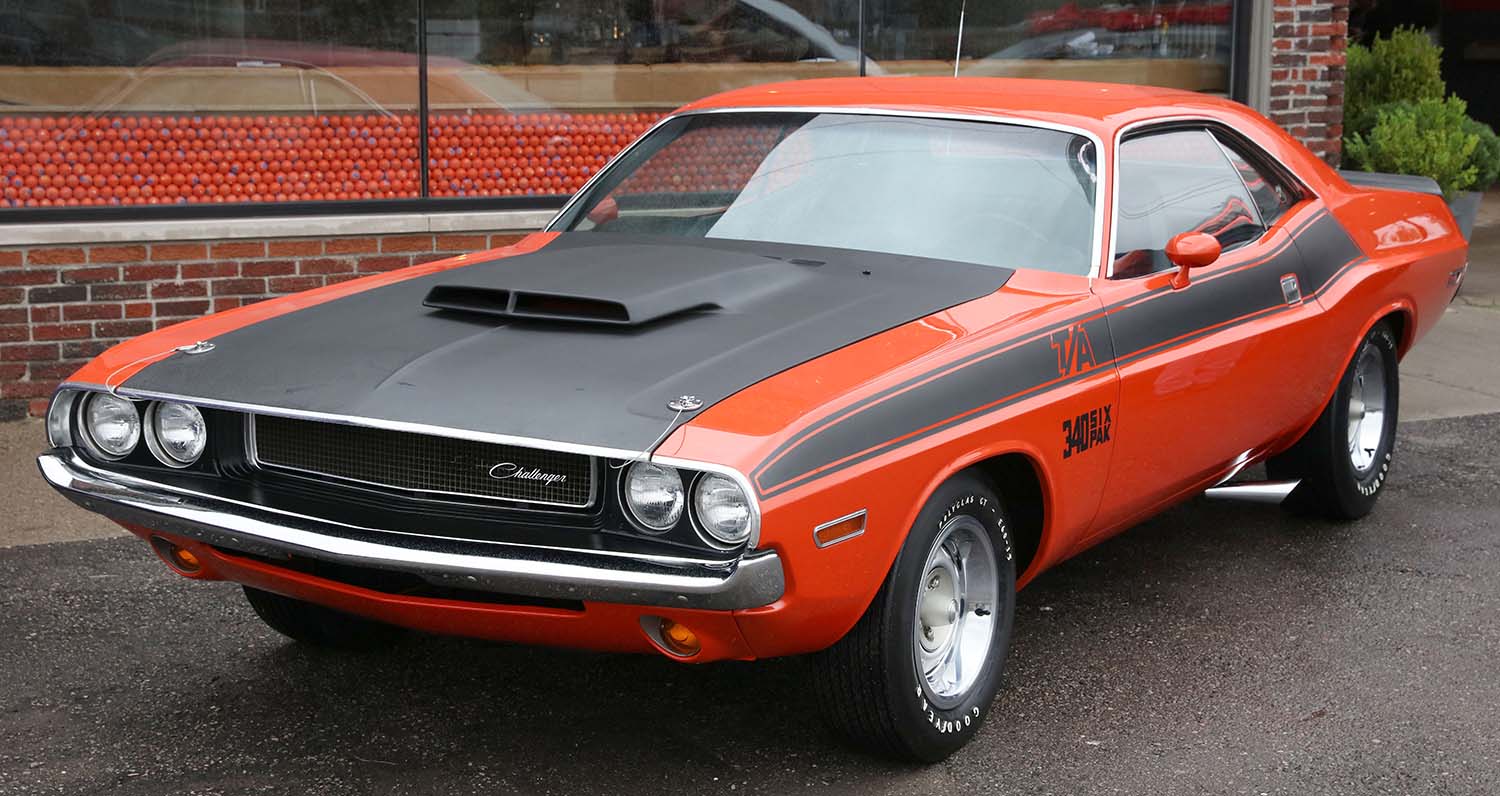
1970
The Dodge Challenger made its debut in the fall of 1969 as a 1970 model. While it shared Chrysler’s “E-body” short-deck, long-hood platform with the third-generation Plymouth Barracuda, Dodge Challenger’s wheelbase was 2 inches longer, creating more interior space.
The Dodge Challenger was originally offered as a two-door hardtop or convertible, in base, SE (Special Edition), R/T (Road/Track) and T/A (Trans-Am) trim. But it was the range of powertrain choices that was truly remarkable:
- 225-cubic-inch I-6; 145 horsepower
- 318-cubic-inch V-8; 230 horsepower
- 340-cubic-inch V-8; 275 horsepower (290 horsepower in the T/A)
- 383-cubic-inch V-8; 290 horsepower
- 383-cubic-inch V-8; 330 horsepower
- 383-cubic-inch V-8; 335 horsepower
- 426-cubic-inch HEMI V-8; 425 horsepower
- 440-cubic-inch V-8; 375 horsepower
- 440-cubic-inch V-8; 390 horsepower
Driveline choices for various engines included Chrysler’s TorqueFlite automatic transmission and a three- or four-speed manual transmission, which could be equipped with a Hurst “pistol-grip” shifter. Big-block Challengers could be ordered with a heavy-duty Dana 60 differential equipped with a limited-slip differential.
Even the paint schemes said “performance,” with colors, including Plum Crazy and HEMI Orange, accented with “bumblebee” stripes. Customers could further customize their cars with twin-scooped hoods, “shaker” hoods and deck-lid wings.
Befitting the brand’s performance heritage, Dodge raced the Challenger in its first year on the market. For the street, it was offered in the limited-edition T/A model to meet homologation requirements for Sports Car Club of America (SCCA) Trans-Am racing. The T/A was one of the first production vehicles to offer staggered size tires in the front and back; E60 x 15-inch front and G60 x 15-inch rear.
In 1970, Sam Posey drove the lone Trans-Am racing Challenger, prepared and run by Ray Caldwell’s Autodynamics Race Shop. While he didn’t win a race in the No. 77 car, Posey finished fourth overall in points.
Drag racers, including Dick Landy and Ted Spehar, also campaigned Challengers in the National Hot Rod Association’s new Pro Stock class. In 1970 and 1971, the HEMI-powered Challengers (and Plymouth ‘Cudas) virtually ruled the class.
On the big screen, a 1970 Challenger R/T starred in the film Vanishing Point, a high-speed pursuit movie that has become a cult favorite with muscle-car fans. The movie was remade for television in 1997.
Other 1970 Dodge Challengers have been seen in films, including Used Cars, Natural Born Killers and Phantasm I and II; and in television shows, including Mod Squad.
For the 1970 model year, more than 83,000 Dodge Challengers were sold.
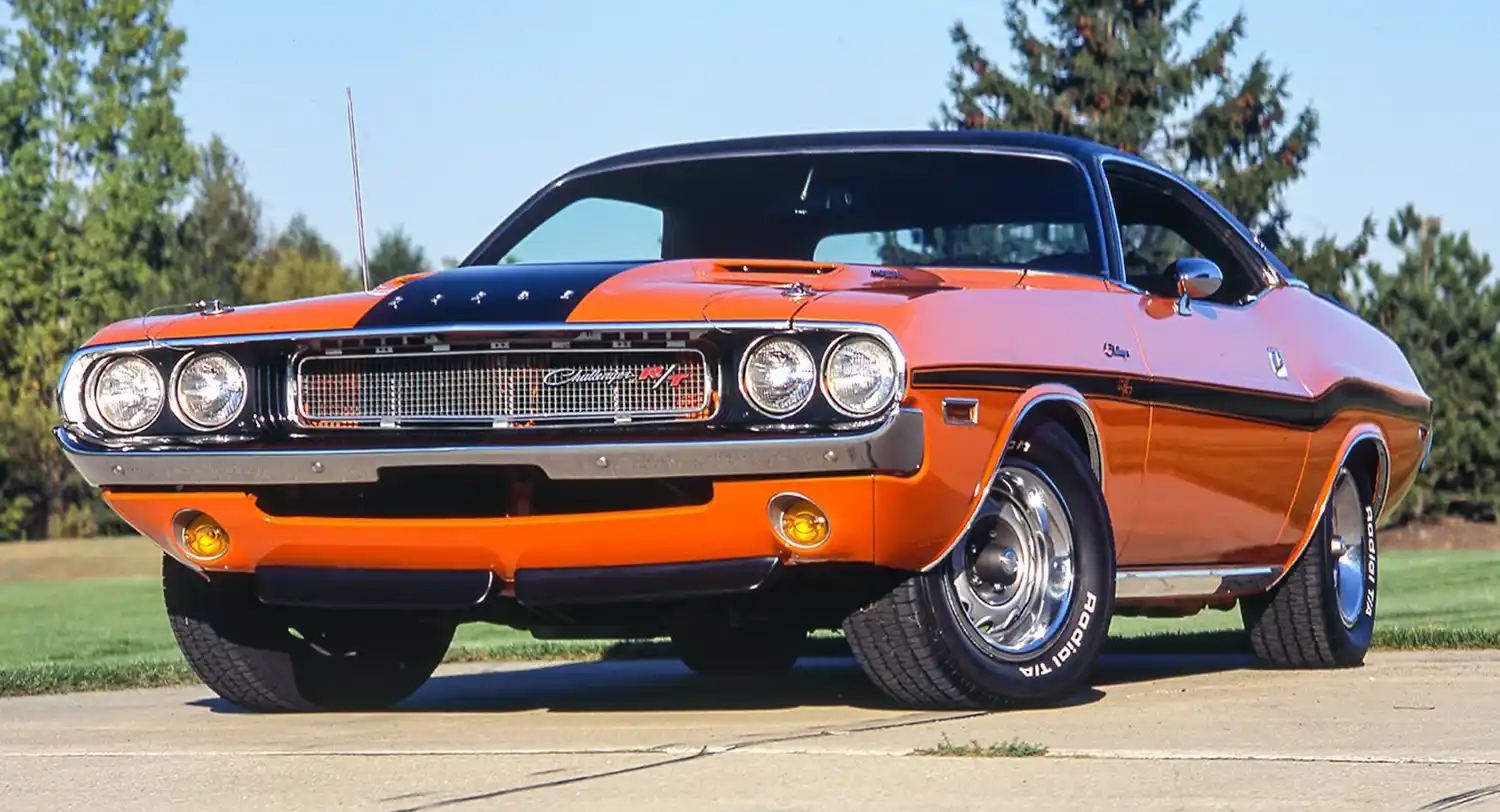
1971
In 1971, designers made subtle styling changes to the Dodge Challenger, providing new treatments to the taillamps and grille. The single-taillamp design from 1970 became two distinct lights for 1971, and a new-for-1971 twin-inlet Challenger grille was painted silver on standard models and black on R/Ts.
Challenger R/T models also received a set of fiberglass quarter-panel louvers. An additional coupe model with fixed quarter windows was added to the lineup.
As in 1970, a wide range of trim levels, exterior colors and striping options made the Dodge Challenger easy for customers to create a special car. However, for 1971, Dodge dropped the T/A (it was no longer racing in Trans-Am), SE models and R/T convertible.
New EPA emission standards led to some powertrain changes; the optional 375 horsepower 440-cubic-inch was eliminated, as was the Six Pack-equipped 340-cubic-inch powerplant. The 383-cubic-inch Magnum engine was detuned to 300 horsepower by lowering the compression ratio for improved emissions. However, a 390 horsepower six-pack 440 V-8 was available, and the 425 horsepower 426-cubic-inch HEMI still topped the vast engine offerings.
A Dodge Challenger paced the Indianapolis 500 race in 1971. Dodge produced 50 Challenger convertible pace car replicas — all painted HEMI Orange with white tops and interiors.

1972
With escalating insurance rates and new EPA emissions mandates, more changes came to the Dodge Challenger in 1972. Also, the Society of Automotive Engineers (SAE) revised the torque and horsepower rating test from a “gross” to a “net” as installed in the cars. This reduced all ratings 20 to 30 percent, making them non-comparable to previous ratings.
Only three engines were available in the 1972 Dodge Challenger: the 225-cubic-inch Slant Six with 110 horsepower, the 318-cubic-inch V-8 with 150 horsepower and the 340-cubic-inch V-8 with 240 horsepower. All were equipped to use the then-new unleaded fuel.
With convertible sales in steady decline over several years, the 1972 Dodge Challenger was offered in hardtop form only. The sun roof had become a more popular alternative and was offered as an option for more than $400.
New front-end styling in 1972 featured a larger “egg-crate” grille. It was painted argent for standard Challengers and black on the Challenger Rallye performance model, which replaced the R/T. The Challenger’s taillamp design included twin lights on each side, with the center panel painted the same color as the grille. The Rallye model also was equipped with four small scoops on the front fenders.
1973
Beginning in 1973, the federal government mandated new bumper-impact standards that resulted in the only changes to the Dodge Challenger exterior — five-miles-per-hour bumpers equipped with large rubber guards that extended out from the bodywork.
Inside, grained vinyl was the only available seating material, but a new instrument-cluster design was part of the Rallye option package. The Rallye was eliminated as a separate model, although customers could create one with options.
Under the hood, the six-cylinder engine was no longer available; the 150 horsepower 318-cubic-inch V-8 was standard, with the 240 horsepower 340-cubic-inch V-8 as the only option.
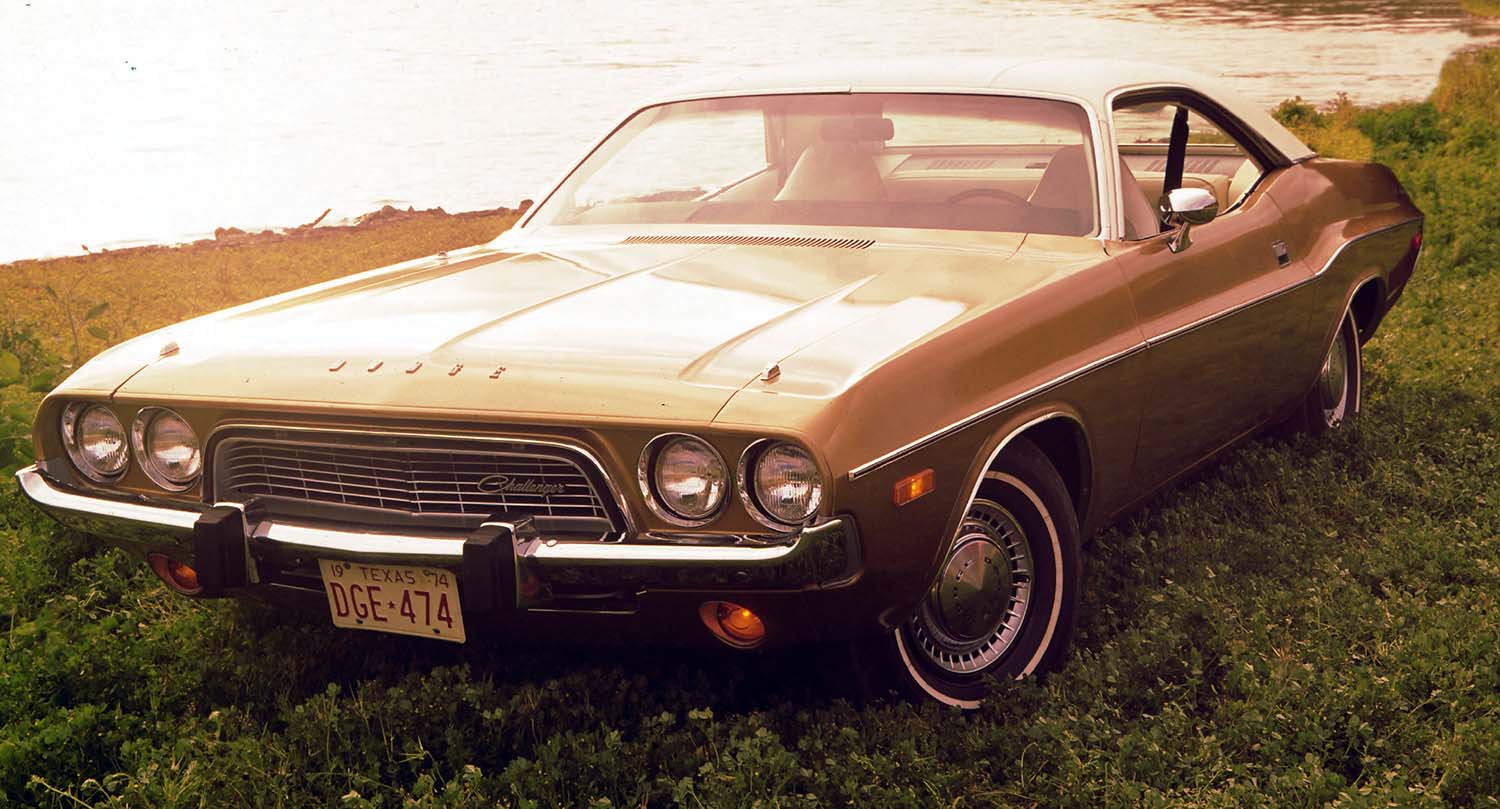
1974
With performance car insurance rates skyrocketing, more safety equipment led the short list of changes for the 1974 model-year Dodge Challengers.
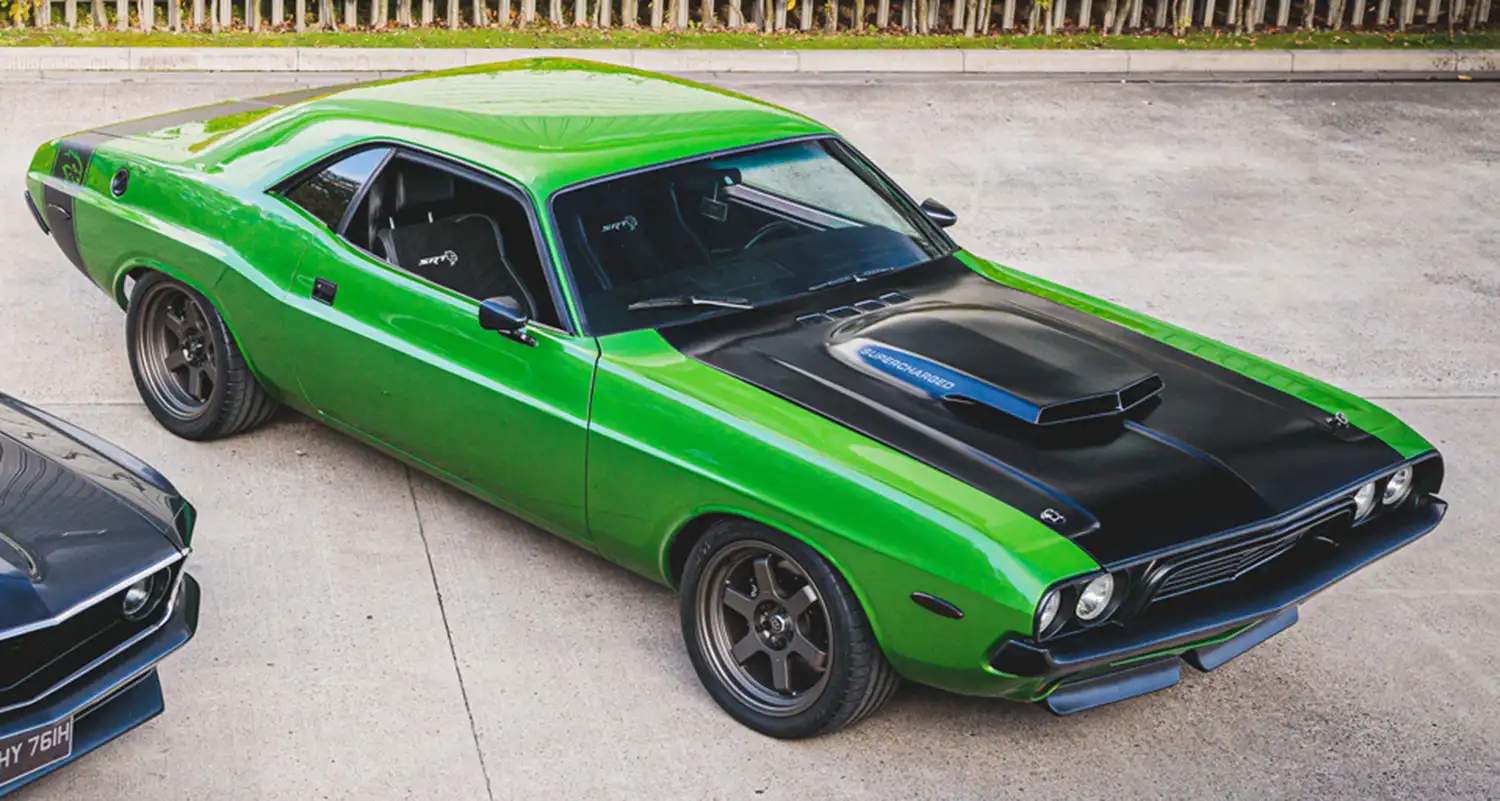
Inside, lap and shoulder belts were equipped with an inertia reel. In addition, there was a federally mandated seat belt-ignition interlock, which prevented the car from being started if the driver or passenger didn’t buckle up.
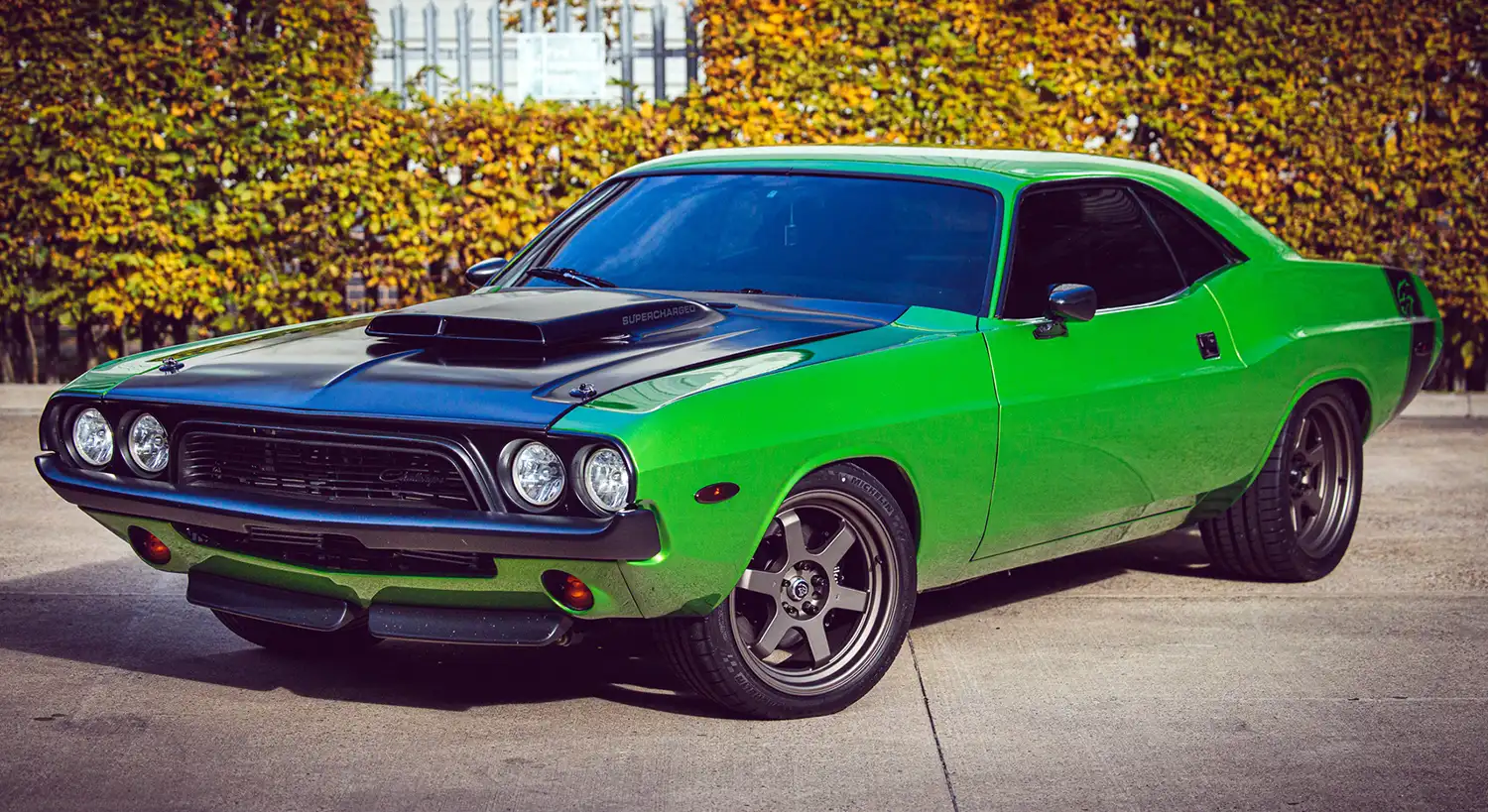
The Dodge Challenger offered a different engine option for 1974. With the 318-cubic-inch V-8 still standard, a 360-cubic-inch V-8 producing 245 horsepower replaced the 340-cubic-inch V-8 as the only engine option.
In April 1974, Challenger production ceased. During a five-year span, approximately 188,600 Dodge Challengers were sold.

1978-1984
Beginning in 1978 — the year the U.S. Corporate Average Fuel Economy (CAFE) standard took effect — Dodge offered a new Challenger two-door coupe imported from Mitsubishi. It was offered with a standard 1.6-liter, 77 horsepower I-4 engine, with a 2.6-liter, 105 horsepower four-cylinder as an option.
Slightly restyled in 1981, the Dodge Challenger soldiered on until 1984, replaced by the growing stable of Chrysler Corporation’s K-platform compacts and a new import from Mitsubishi: the Dodge/Plymouth Conquest.
During its six-year run, sales of the imported Dodge Challenger averaged between 12,000 and 14,000 units per year.
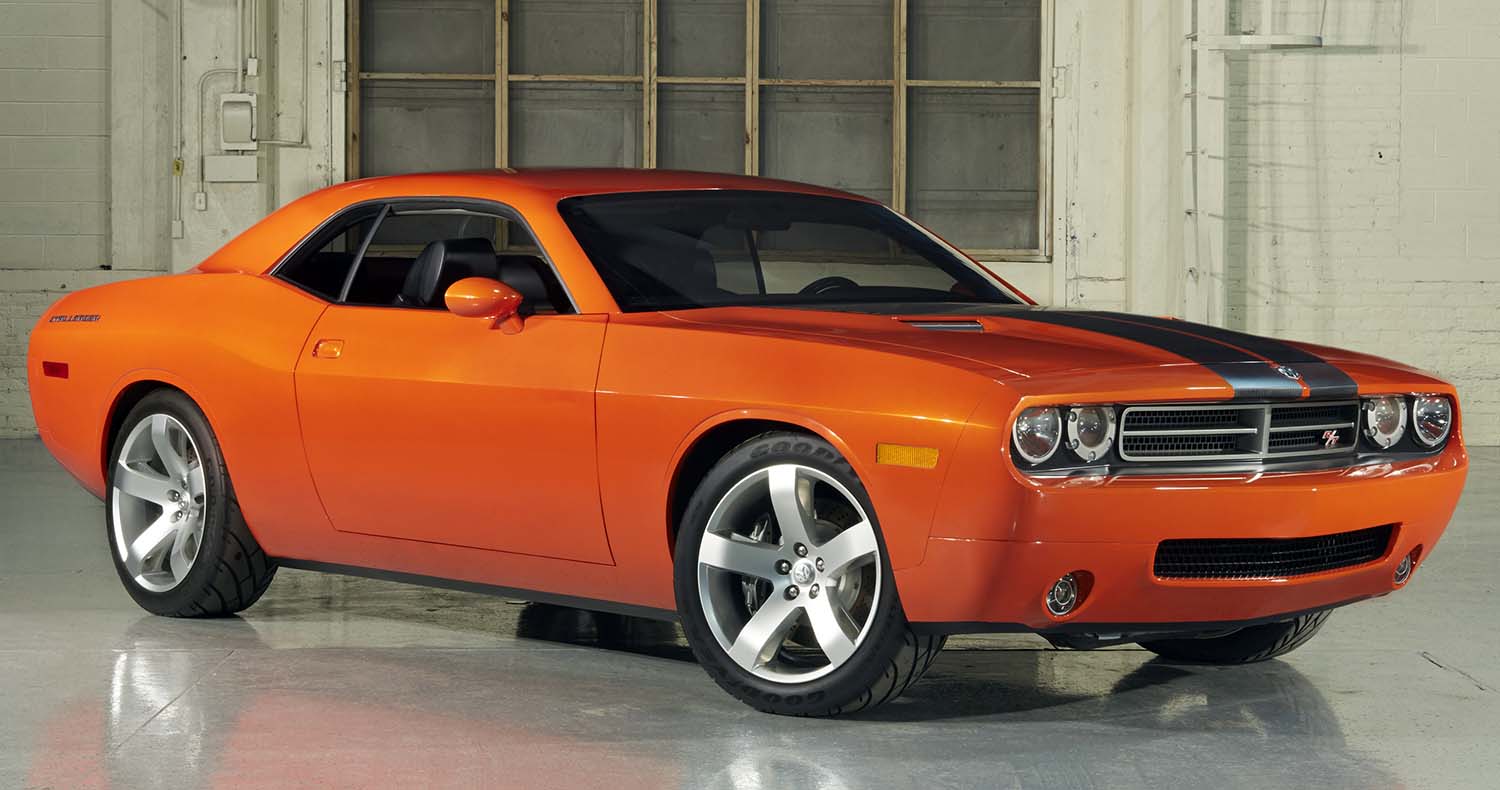
The 3rd Generation (2006 till date)
In late 2005, Dodge teased spy photos of the Dodge Challenger prototype on the internet and it was announced on November 21, 2005, showing an official drawing sketch of the vehicle. The Dodge Challenger Concept was unveiled at the 2006 North American International Auto Show and was a preview for the 3rd generation Dodge Challenger that started its production in 2008. Many design cues of the Dodge Challenger Concept were adapted from the 1970 Dodge Challenger R/T. It was the second pony car to reuse a previous design in the 2000s, after the 2005 Ford Mustang, but before the 2010 Chevrolet Camaro (which was revived after seven years of being out of production).
Initial release
On December 3, 2007, Chrysler started taking deposits for the 3rd-generation Dodge Challenger which debuted on February 6, 2008, simultaneously at the Chicago Auto Show and Philadelphia International Auto Show. Listing at US$40,095, the new version was a 2-door notchback coupe (seating 5 passengers with over 33 cubic feet of rear passenger volume) which shared common design elements with the first generation Challenger, despite being significantly longer and taller. As with Chevrolet’s new Camaro, the Challenger concept car’s pillarless hardtop body was replaced with a fixed “B” pillar, hidden behind the side glass to give an illusion of the hardtop.
The LC chassis is a modified (shortened wheelbase) version of the LX platform that underpins the Dodge Charger (LX), Dodge Magnum, and the Chrysler 300. The LX was developed in America from the previous Chrysler LH platform, which had been designed to allow it to be easily upgraded to rear and all-wheel drive. Many Mercedes components were incorporated, or used for inspiration, including the Mercedes-Benz W220 S-class control arm front suspension, the Mercedes-Benz W211 E-Class 5-link rear suspension, the W5A580 5-speed automatic, the rear differential, and the ESP system. All (7119) 2008 models were SRT8s and equipped with the 6.1 L (370 cu in) Hemi V8 engine and a 5-speed AutoStick automatic transmission. The entire 2008 Canadian produced run of 6,400 US market cars were pre-sold and production commenced on May 8, 2008.
Chrysler of Mexico offered only 100 SRT8s, with a 6.1 liter V8 engine rated at 425 horsepower (317 kW) (SAE). Chrysler auctioned off two 2008 SRT8s for charity with the first car going for US$400,000 and a “B5” Blue No.43 car with a winning bid of US$228,143.43.
The base model Challenger SE was initially powered by a 3.5 L (214 cu in) SOHC V6 engine rated at 250 hp (186 kW) (SAE) and 250 lbf⋅ft (339 N⋅m) of torque which was coupled to a 4-speed automatic transmission for the first half of 2009, and was then changed to have a standard 5-speed automatic transmission.Several different exterior colors, with either cloth or leather interiors became available. Standard features included air conditioning, power windows, locks, and mirrors; cruise control, and 17-inch (430 mm) aluminum wheels.
Leather upholstery, heated front seats, sunroof, 18-inch aluminum wheels, and a premium audio system are available as options, as are ABS, and stability and traction control. The Canadian market also sports the SXT trim, similar to the SE, but more generous in terms of standard features. Some of these features being ESP, an alarm system, and 18-inch (460 mm) wheels. Starting with the 2012 model year, the SE was replaced in the U.S. with the SXT model.
Previous to the 2012 model year, the SXT version of the Challenger was only sold in Canada and is a more well-equipped variation of the SE. It adds fog lamps, a rear spoiler, larger wheels, illuminated vanity mirrors, security alarm and a leather-wrapped shifter. In addition, the SXT has increased option packages available to it that aren’t available on the SE, and are also available to the R/T. (Such as the high-end navigation-enabled entertainment system.)
2006
At the North American International Auto Show in Detroit in January 2006, Dodge unveiled the Challenger concept to immediate acclaim. Based on the Dodge Charger’s advanced rear-wheel-drive platform and legendary HEMI V-8 engine, the Dodge Challenger concept featured the long hood, short deck, wide stance and two-door coupe body-style that resembled the iconic Challengers of the 1970s. Over the next several months, the company received repeated pleas from consumers and the media to build the car.
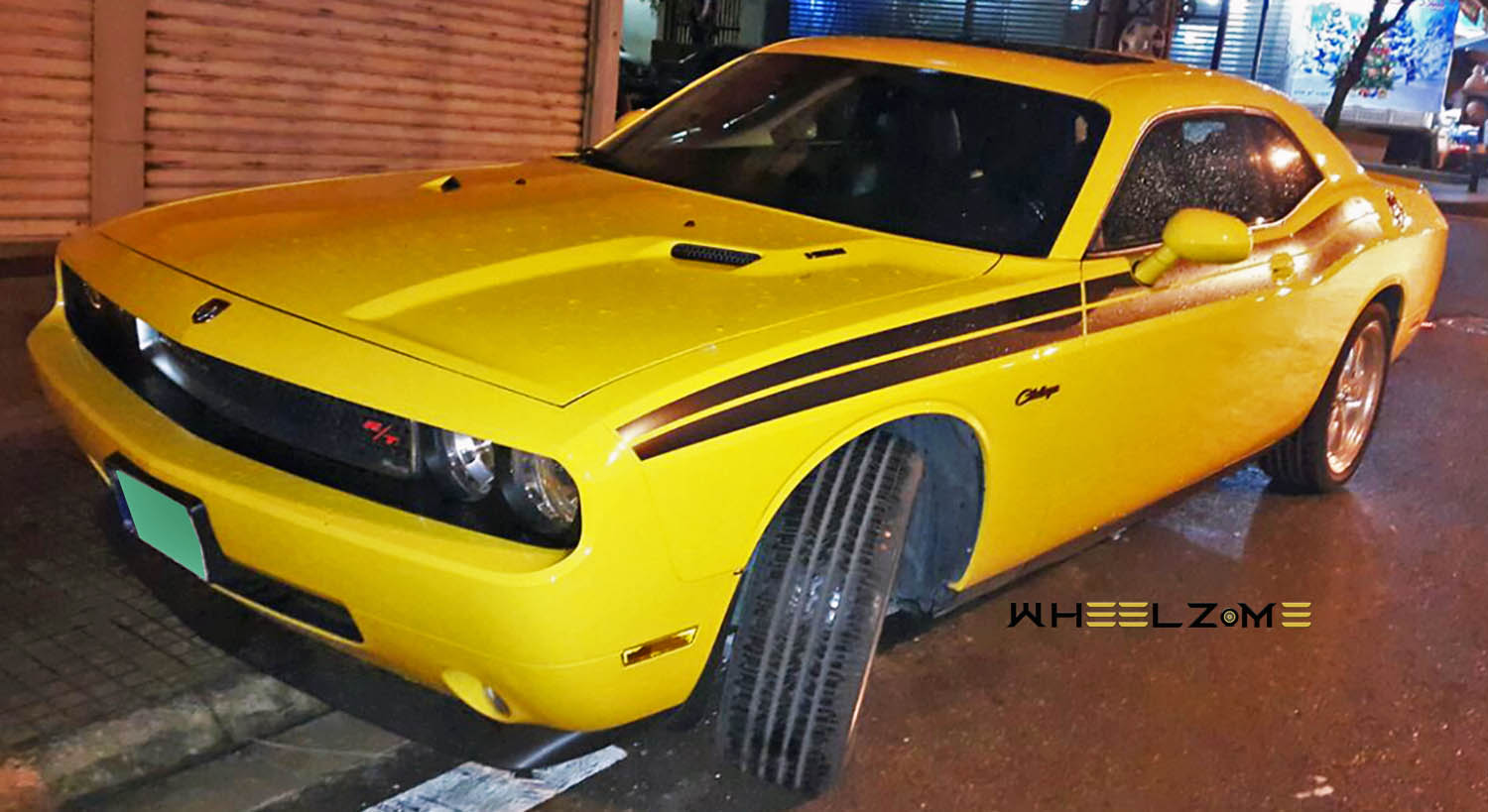
2008
The Dodge Challenger returned with the all-new 2008 Dodge Challenger SRT8® at the Chicago Auto Show. The 2008 Dodge Challenger SRT8 offered all that pony-car fanatics crave: ground shaking performance, unmistakable design cues reminiscent of the original Challenger, world-class ride and handling characteristics and benchmark braking.
The Dodge Challenger SRT8’s 425 horsepower (317 kW) and 420 lb.-ft. of torque (569 N•m) were the result of SRT’s exclusive, proven 6.1-liter HEMI V-8 engine. Its 69.8 horsepower-per-liter rating exceeds even that of the legendary 1966 “Street HEMI.”
Dodge Challenger SRT8 sports a five-link independent rear suspension allowing for independent tuning of ride-and-handling characteristics. The Challenger SRT8 featured SRT-exclusive 20-inch fully-forged Alcoa aluminum wheels with four-season Goodyear Eagle RS-A or optional three-season Goodyear F1 Supercar tires. All four wheels were equipped with red painted Brembo calipers that feature four opposing pistons on a fixed caliper for even clamping performance.
The 6,400 Dodge Challenger SRT8 models built for the 2008 model year were available in HEMI Orange, Bright Silver Metallic and Brilliant Black Crystal Pearl exterior paint colors. Interior highlights included race-inspired leather seats with added bolstering and an exclusive red accent stripe, exclusive stitched accents on the seats and steering wheel, four-bomb gauges with tachometer and 180-mph speedometer in the center. An SRT-exclusive Reconfigurable Display (RCD) with Performance Pages provided drivers instant feedback on zero to 60 mph time, 60 to zero mph braking, g-forces and 1/4-mile time, and limited-edition numbered dash plaque.
The first production 2008 Dodge Challenger SRT8 was sold at the 37th annual Barrett-Jackson Collector Car Auction with a winning bid placed by Craig Jackson, Chairman/CEO of the Barrett-Jackson Auction Company of $400,000. All of the proceeds went to charity.
2009
The introduction of the all-new 2009 Dodge Challenger SE and R/T models at the New York International Auto Show delivered the full lineup of Dodge Challengers to the marketplace. From the maximum Dodge Challenger SRT8, to the performance of the Challenger R/T with its 5.7-liter HEMI V-8, to the cutting-edge technology of Challenger SE with the efficient 3.5-liter V-6 engine, the 2009 Dodge Challenger offered a full menu of options for every customer.
Adding even more capability than the 2008 model, the 2009 Dodge Challenger SRT8 with its powerful 6.1-liter HEMI V-8 offered a six-speed manual transmission, in addition to the proven five-speed automatic with Auto Stick. The six-speed—the Tremec TR-6060—was matched with a race-inspired dual-disc clutch that was first offered on the 2008 Dodge Viper SRT10.
The new 2009 Dodge Challenger R/T tucked its legendary 5.7-liter HEMI V-8 engine under a long, raised performance hood with functional hood scoops to increase engine cooling. The newest-generation 5.7-liter HEMI® V-8 engine featured dual Variable-cam Timing (VCT) and dual ignition (two spark plugs per cylinder) to increase power and torque, while improving refinement and efficiency.
When paired with the automatic transmission, the new-generation 5.7-liter HEMI® V-8 included the fuel-saving Multi-displacement System (MDS) allowing Dodge Challenger R/T Classic to operate economically on four cylinders, or produce 372 horsepower (277 kW) and 401 lb.-ft. of torque (544 N•m) when all eight cylinders are needed.
With its “pistol grip” shifter, the six-speed manual transmission Dodge Challenger R/T featured a performance-tuned dual exhaust with optimized engine back pressure and two low-restriction bottle resonators for maximum “throatiness.” The result, even more power at tap with 376 horsepower (280 kW) and 410 lb.-ft. of torque (556 N•m) ready to accelerate the Dodge Challenger R/T from zero to 60 mph in less than 6 seconds.
The new 2009 Dodge Challenger SE powered by the 3.5-liter High Output V-6 with a four-speed automatic transmission produced 250 horsepower (186 kW) and 250 lb.-ft. of torque (339 N•m).
Halfway through the 2009 model year, the Dodge Challenger R/T Classic offered menacing looks and, combined with the 5.7-liter V-8 engine, an unforgettable punch. Based on the Challenger R/T, the Challenger R/T Classic featured dual throwback A-line body-side R/T stripes in matte black, ‘Challenger’ fender badging in classic script, large 20-inch polished-chrome heritage wheels, classic egg-crate grille with heritage ‘R/T’ badge, body-color rear spoiler and bright racing style fuel filler door.
The 2009 Dodge Challenger SE Rallye added even more pony-car excitement with a more responsive five-speed automatic transmission (implemented as standard equipment on all mid-year Challenger SEs), throw-back hood and deck-lid dual stripes with accent color outer stripes, bright racing style fuel filler door, 18-inch rallye wheels with all-season performance tires, body-color deck-lid spoiler and Micro Carbon interior accents.
Original B5 Blue returned from the Dodge paint code archive for a limited-edition run of Challenger R/T Classic and Challenger SRT8 models.
Based on the production Dodge Challenger SRT8, Mopar® offered a modern factory-prepped Challenger Drag Race Package Car (as a special body-in-white). To reduce vehicle weight, major production component and systems were eliminated, including windshield wiper assembly, complete HVAC system, all airbag components, rear seats, power steering system, exhaust system and underbody heat shields, cross-car and side-impact door beams, rear-bumper beam and rear deck-lid spoiler. The drag racer offered three engine options — 6.1-liter or 5.7-liter HEMI or 5.9-liter Magnum® Wedge — as well as manual or automatic transmission options.
2010
The 2010 Dodge Challenger R/T and Challenger R/T Classic add even more performance and excitement with the Super Track Pack for the 2010 model years. This handling package includes 20-inch Goodyear Eagle F1 Super Car tires, front and rear Nivomat self-leveling shock-absorbers, a larger rear stabilizer bar, a 3.06 rear-axle ratio, performance brake linings and enthusiast-desired “ESC-off” stability calibration.
Even more exclusive, and true to Challenger’s high-performance history are the 2010 Dodge Challenger R/T Classic and SRT8 Detonator Yellow and Plum Crazy editions. The Dodge Challenger R/T Classic in Plum Crazy Pearl Coat is the first limited-edition to offer dual throwback A-line body-side R/T stripes in matte black or new bright white, while the SRT8 editions feature unique SRT-designed appointments and unique SRT performance seats with accented stripe.
Two of the wildest and rarest 2010 Dodge Challenger special editions will soon be available to Dodge fans and collectors to celebrate 40 years of Dodge Challenger performance: the 2010 Dodge Challenger R/T Classic and Challenger SRT8 Furious Fuchsia editions. With Furious Fuchsia Pearl Coat exterior paint and all-new Pearl White leather performance seats, these limited-edition Dodge Challengers deliver the best of modern American muscle-car characteristics — now in one of the most significant hues.

2014
The Challenger largely soldiered on with minimal changes for 2014. A new performance package called the “Super Sport Group” was made available for V6 challengers and included the performance-suspension, steering, and brakes from the R/T challengers, a 3.07:1 axle ratio with 215mm rear axle for faster acceleration, rear spoiler, and 20-inch chrome wheels with wider P245/45R20 all-season performance tires. The “Sinister Super Sport pack” was a Super Sport Group but with black wheels instead of chrome. The Challenger SRT8 also gained a launch control system.
2018
Minor changes were made for the 2018 model year. For SXT and R/T models equipped with the 3.6-liter V6 and 5.7-liter V8, a new Performance Handling Group package is available. This package adds 4-piston black Brembo brakes (a $500 option for red brake calipers is optional) in the front along with a Bilstein performance suspension, 20×9 inch wheels with 245/45ZR20 performance tires, and upgraded steering. The Challenger GT gains a new 19-inch wheel option while SXT Plus and R/T Plus trims equipped with the Super Track package come with Nappa leather and microsuede sport seats. The SXT, R/T, R/T Shaker, and T/A models receive a standard 7.0-inch Uconnect touchscreen. A backup camera is now standard. For exterior colors, new additions include F8 Green, IndiGO Blue, B5 Blue and Plum Crazy.
SRT Demon
Dodge Challenger Demon at the 2018 Geneva Motor Show
The Demon is a limited production wide-body and extreme (drag race level) performance variant of the already high-performance Challenger SRT Hellcat. It debuted during the New York Auto Show in April 2017.
The Demon uses an all-new 6.2-liter V8 engine equipped with a 2.7-liter supercharger, which is rated at 808 hp (603 kW; 819 PS) with 91 octane gasoline and 840 hp (626 kW; 852 PS) with 100 octane fuel or higher (both outputs are with the red key fob supplied with the car). Torque stands at 770 lb⋅ft (1,044 N⋅m) on 100 octane fuel.
The car weighs 215 lb (98 kg) less than the Hellcat, the total being 4,254 lb (1,930 kg). The SRT Demon uses a set of road tires by Nitto Tire, called the NT05R. The tires are the 315/40R18 variations at both front and rear. The tires are targeted for the drag strip, but have enough tread pattern to make them legal for the road.
This tire, although an NT05R consumer tire, is a variation built specifically to withstand the power output of the Demon. This makes the Challenger SRT Demon the first production car to contain a set of drag radial road tires. The SRT Demon contains a system that is used specifically for drag racing called transbrake.
Dodge uses a unique transbrake that puts the transmission in 1st gear and 2nd gear simultaneously, holding the Demon stationary. This is used along with the car’s torque converter to build up hydraulic pressure before launch.
The power-to-weight ratio of the SRT Demon is 418 hp (312 kW; 424 PS) per ton on 91 octane gasoline and 435 hp (324 kW; 441 PS) per ton on 100 octane or higher.
2019 model year
For the 2019 model year, Dodge released new high-performance versions of the Challenger, trimmed the line-up down to six models, and made numerous other tweaks and changes. The model line-up for 2019 includes the following trims: SXT, GT, R/T, R/T Scat Pack, SRT Hellcat, and SRT Hellcat Redeye. Both SXT and GT models are now available in both rear and all-wheel drive, with the GT previously having been the only model available in AWD.
2020
For the 2020 model year, Dodge introduced a SRT Super Stock model slotting in between the Hellcat Redeye and the Demon. The engine is the same as the Redeye, but is slightly more powerful at 807 hp (602 kW; 818 PS). This is enabled by a revision of the powertrain calibration, which increases the redline from 6300 to 6400 rpm. Additionally, the Super Stock gains lightweight 18-inch wheels with the same drag radials as the Demon, along with a shorter final-drive ratio and drag-optimized suspension tuning for the Bilstein adaptive dampers in Track Mode.
However, it uses four-piston Brembo and 14.2-inch rotors instead of the Redeye’s six-piston Brembo and 15.4-inch rotors. A 50th Anniversary Package was also announced for GT RWD, R/T Shaker, R/T Scat Pack, and R/T Scat Pack Shaker Widebody models, as well as the SRT Hellcat and SRT Hellcat Redeye.
The package includes a Shaker hood scoop and gunmetal brake calipers on select models, wheels in Gold Rush paint, and a special grille badge, with Nappa leather and Alcantara upholstery featuring sepia stitching, a serialized number plaque and carbon-fiber trim inside. Each model was limited to 70 units; colors include Frostbite, Hellraisin, Sinamon Stick, TorRed, F8 Green, Go Mango and an exclusive Gold Rush.
2021
For the 2021 model year, Dodge added Gold Rush on the T/A, T/A 392, SRT Hellcat, and SRT Hellcat Redeye models. R/T Scat Pack Shaker and T/A 392 models gain a wide-body option, while 20-inch wheels and tires are now standard on the GT AWD model.
Source: stellantisnorthamerica.com & Wikipedia Under GNU Free Documentation License.


